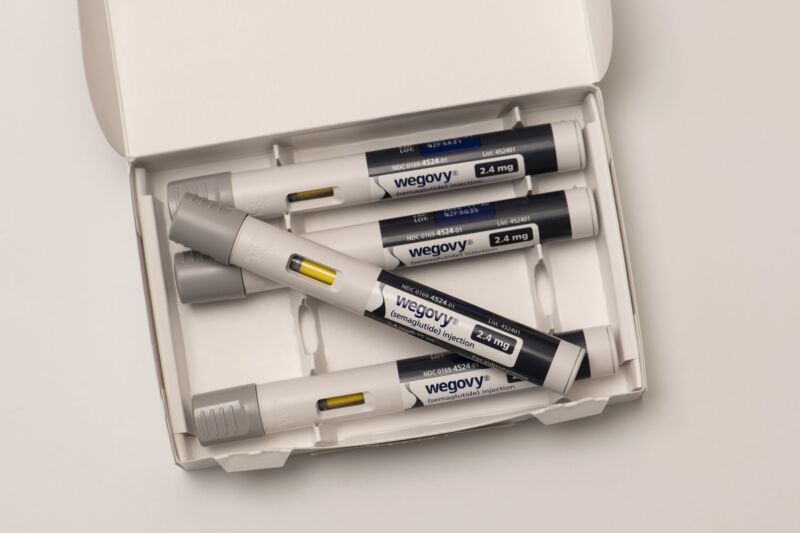Innovation isthe driving factor that defines how we do business. Mastercard, for example,has been at the forefront of transforming the way we make payments.Mastercard’s significance and developments in this field are clear as we enteran era characterized by the growing prevalence of contactless payments.
Contactlesspayments are not a new concept, but they have acquired significant traction inrecent years. This trend is being pushed mostly by technological improvements,changing customer preferences, and the need for safer and more convenientpayment methods, particularly in the aftermath of the COVID-19 outbreak.
Mastercard’sintroduction into the field of contactless payments was both smart andopportune. The organization has made tremendous advancements in this industryby leveraging its broad worldwide network, technological competence, andcommitment to innovation.
Mastercard’sContactless Footprint Extends
Mastercard isaffecting the future of payments in a significant way by growing the acceptanceof contactless payments. Millions of merchants accept Mastercard cards acrossthe globe. The corporation did not, however, stop using physical card-basedcontactless payments.
Integrationof a Digital Wallet
Mastercard hastaken the initiative to integrate with popular digital wallets such as ApplePay, Google Pay, and Samsung Pay. Mastercard users can now link their cards tothese platforms, providing secure and simple mobile payments.
Authenticationusing Biometrics
In the age ofcontactless payments, security is of the utmost importance. Mastercard hasresponded by introducing biometric identification technologies such asfingerprint and face recognition. These technologies give an extra layer ofsecurity, making contactless payments even more secure.
Cards thatyou can tap and go
Tap-and-gocards from Mastercard have become a common sight at checkout counters. Thesecontactless cards enable customers to complete purchases quickly and easily bymerely tapping their card on the payment terminal.
Globalizationof Standards
Mastercard hashelped to standardize contactless payment technology, ensuring that it operatesconsistently across regions and payment systems. This global standardization iscritical for foreign travelers and businesses.
ImprovedUser Experience
Mastercard isdedicated to offering an exceptional user experience. Contactless payments arenot only safe, but also fast and easy. Users love the ease of making a purchaseby tapping a card or smartphone, which eliminates the need for real currency orlengthy card swiping processes.
Mastercard’sInnovation Commitment
Mastercard’sdedication to innovation goes beyond the present. The company is continuing tospend in R&D in order to create a future in which payments are even moreeasy and safe.
Wearableswith No Contact
Mastercard hasdabbled with the wearables market, collaborating with firms to createcontactless payment devices that may be worn as wristbands, rings, or evenincorporated in garments. This advancement is consistent with the growing trendof incorporating technology into everyday accessories.
Tokenization
Tokenizationtechnology is used by Mastercard to protect sensitive card data duringtransactions. A unique token is utilized instead of transferring actual cardnumbers, offering an added degree of protection to contactless purchases.
Integrationof the Internet of Things (IoT)
Mastercard isworking to enable safe payments over linked devices as the Internet of Thingsgrows more ubiquitous. Consider your refrigerator restocking groceries andprocessing payments for you, all thanks to Mastercard’s IoT connectivity.
ThePandemic’s Effects
As individualssought safer ways to transact, the COVID-19 pandemic increased the usage ofcontactless payments. Mastercard was quick to adapt to this transition bypromoting contactless choices, and this versatility has cemented its role indetermining the future of payments.
The Futureas Seen by Mastercard
The vision ofMastercard for the future of contactless payments goes beyond convenience andsecurity. The company’s goal is to make digital financial services available toeveryone. Mastercard is constantly striving to address financial inclusionconcerns and expand the reach of contactless payments to marginalized populationsthrough partnerships and initiatives.
MastercardDisputes Reports of Credit Card Fee Increases
Mastercardis refuting recent reports that it plans to increase credit card fees.Contrary to an August 30th Wall Street Journal article, the credit cardprocessing giant, along with an 80% market share, hasno intention of raising interchange rates or network fees for processingMastercard transactions in the U.S. this fall.
The confusion arose from areport by an advisory firm advocating for congressional legislation. Mastercardclarifies that the only fee discussed in the study is the AuthorizationOptimizer service, which is unrelated to interchange rates. This service aimsto minimize declines in subscription and recurring payments, with minimalassociated fees.
Despite calls from SenatorsRoger Marshall and Dick Durbin to halt such fee hikes, Mastercard insists thatthese actions would negatively affect consumers. They argue that increasedcosts could result in compromised security, loss of rewards programs, andhigher prices for goods and services. Mastercard acknowledges that Congress isexploring legislation that could benefit merchants but emphasizes the need foraccurate information to make informed decisions.
The credit card industry hasbeen under scrutiny, with some states, like New Jersey, enacting laws to limitcard swipe fees passed on to consumers. Managing credit card debt is vital forAmericans, as 35% carry monthly balances. Understanding credit scores andexploring options is crucial to achieving financial goals.
The WayForward
The future ofcontactless payments is undeniably bright, and Mastercard is well-positioned tocontinue defining this landscape. However, problems remain, such as the needfor improved security measures, regulatory considerations, and ensuring thatthe benefits of contactless payments are available to everyone.
Mastercard’sdedication to innovation, security, and user experience places it as a crucialpartner in this dramatic transition as we move toward a future wherecontactless payments are the norm. Contactless payments’ convenience andsecurity are not only transforming how we transact, but also redefining thefinancial services business itself.
To summarize,Mastercard’s influence on the future of contactless payments is certainlysubstantial. Mastercard has been a driving force in the evolution of paymentsdue to its expanding contactless presence, commitment to innovation, andagility in the face of changing customer demands. As technology advances,Mastercard’s influence on how we conduct transactions is expected to rise,making the future of contactless payments exciting and hopeful.
Innovation isthe driving factor that defines how we do business. Mastercard, for example,has been at the forefront of transforming the way we make payments.Mastercard’s significance and developments in this field are clear as we enteran era characterized by the growing prevalence of contactless payments.
Contactlesspayments are not a new concept, but they have acquired significant traction inrecent years. This trend is being pushed mostly by technological improvements,changing customer preferences, and the need for safer and more convenientpayment methods, particularly in the aftermath of the COVID-19 outbreak.
Mastercard’sintroduction into the field of contactless payments was both smart andopportune. The organization has made tremendous advancements in this industryby leveraging its broad worldwide network, technological competence, andcommitment to innovation.
Mastercard’sContactless Footprint Extends
Mastercard isaffecting the future of payments in a significant way by growing the acceptanceof contactless payments. Millions of merchants accept Mastercard cards acrossthe globe. The corporation did not, however, stop using physical card-basedcontactless payments.
Integrationof a Digital Wallet
Mastercard hastaken the initiative to integrate with popular digital wallets such as ApplePay, Google Pay, and Samsung Pay. Mastercard users can now link their cards tothese platforms, providing secure and simple mobile payments.
Authenticationusing Biometrics
In the age ofcontactless payments, security is of the utmost importance. Mastercard hasresponded by introducing biometric identification technologies such asfingerprint and face recognition. These technologies give an extra layer ofsecurity, making contactless payments even more secure.
Cards thatyou can tap and go
Tap-and-gocards from Mastercard have become a common sight at checkout counters. Thesecontactless cards enable customers to complete purchases quickly and easily bymerely tapping their card on the payment terminal.
Globalizationof Standards
Mastercard hashelped to standardize contactless payment technology, ensuring that it operatesconsistently across regions and payment systems. This global standardization iscritical for foreign travelers and businesses.
ImprovedUser Experience
Mastercard isdedicated to offering an exceptional user experience. Contactless payments arenot only safe, but also fast and easy. Users love the ease of making a purchaseby tapping a card or smartphone, which eliminates the need for real currency orlengthy card swiping processes.
Mastercard’sInnovation Commitment
Mastercard’sdedication to innovation goes beyond the present. The company is continuing tospend in R&D in order to create a future in which payments are even moreeasy and safe.
Wearableswith No Contact
Mastercard hasdabbled with the wearables market, collaborating with firms to createcontactless payment devices that may be worn as wristbands, rings, or evenincorporated in garments. This advancement is consistent with the growing trendof incorporating technology into everyday accessories.
Tokenization
Tokenizationtechnology is used by Mastercard to protect sensitive card data duringtransactions. A unique token is utilized instead of transferring actual cardnumbers, offering an added degree of protection to contactless purchases.
Integrationof the Internet of Things (IoT)
Mastercard isworking to enable safe payments over linked devices as the Internet of Thingsgrows more ubiquitous. Consider your refrigerator restocking groceries andprocessing payments for you, all thanks to Mastercard’s IoT connectivity.
ThePandemic’s Effects
As individualssought safer ways to transact, the COVID-19 pandemic increased the usage ofcontactless payments. Mastercard was quick to adapt to this transition bypromoting contactless choices, and this versatility has cemented its role indetermining the future of payments.
The Futureas Seen by Mastercard
The vision ofMastercard for the future of contactless payments goes beyond convenience andsecurity. The company’s goal is to make digital financial services available toeveryone. Mastercard is constantly striving to address financial inclusionconcerns and expand the reach of contactless payments to marginalized populationsthrough partnerships and initiatives.
MastercardDisputes Reports of Credit Card Fee Increases
Mastercardis refuting recent reports that it plans to increase credit card fees.Contrary to an August 30th Wall Street Journal article, the credit cardprocessing giant, along with an 80% market share, hasno intention of raising interchange rates or network fees for processingMastercard transactions in the U.S. this fall.
The confusion arose from areport by an advisory firm advocating for congressional legislation. Mastercardclarifies that the only fee discussed in the study is the AuthorizationOptimizer service, which is unrelated to interchang e rates. This service aimsto minimize declines in subscription and recurring payments, with minimalassociated fees.
Despite calls from SenatorsRoger Marshall and Dick Durbin to halt such fee hikes, Mastercard insists thatthese actions would negatively affect consumers. They argue that increasedcosts could result in compromised security, loss of rewards programs, andhigher prices for goods and services. Mastercard acknowledges that Congress isexploring legislation that could benefit merchants but emphasizes the need foraccurate information to make informed decisions.
The credit card industry hasbeen under scrutiny, with some states, like New Jersey, enacting laws to limitcard swipe fees passed on to consumers. Managing credit card debt is vital forAmericans, as 35% carry monthly balances. Understanding credit scores andexploring options is crucial to achieving financial goals.
The WayForward
The future ofcontactless payments is undeniably bright, and Mastercard is well-positioned tocontinue defining this landscape. However, problems remain, such as the needfor improved security measures, regulatory considerations, and ensuring thatthe benefits of contactless payments are available to everyone.
Mastercard’sdedication to innovation, security, and user experience places it as a crucialpartner in this dramatic transition as we move toward a future wherecontactless payments are the norm. Contactless payments’ convenience andsecurity are not only transforming how we transact, but also redefining thefinancial services business itself.
To summarize,Mastercard’s influence on the future of contactless payments is certainlysubstantial. Mastercard has been a driving force in the evolution of paymentsdue to its expanding contactless presence, commitment to innovation, andagility in the face of changing customer demands. As technology advances,Mastercard’s influence on how we conduct transactions is expected to rise,making the future of contactless payments exciting and hopeful.










